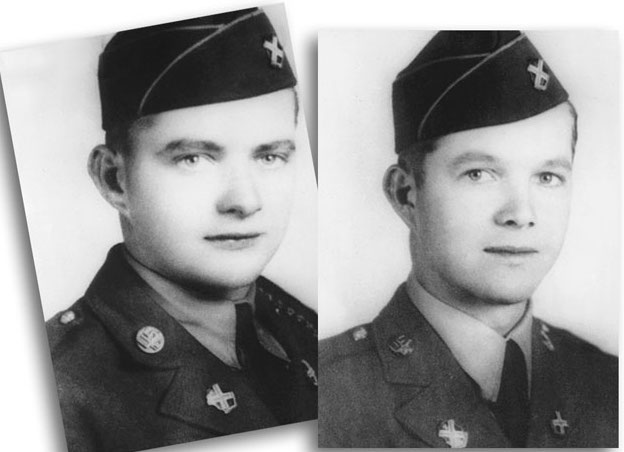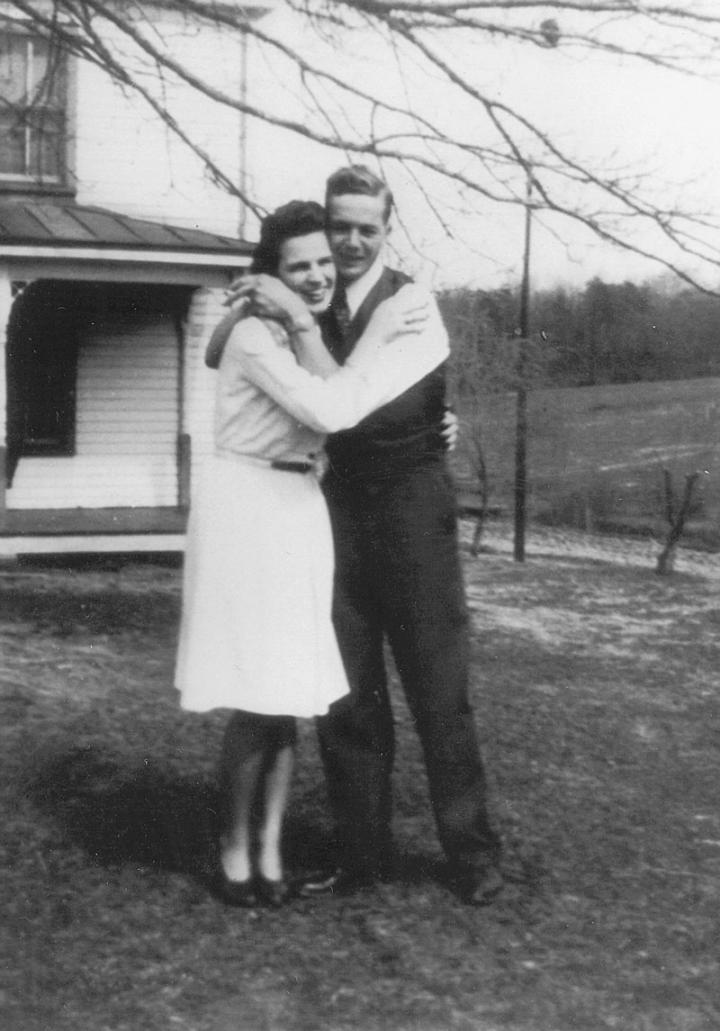To mark the 75th anniversary of D-Day, we revisit the town where “Taps” never ends. One small American town suffered more D-Day casualties, per capita, than any other town in America.
They come every day: old men walking slowly now with their wives, often with their children and grandchildren, to the National D-Day Memorial in Bedford, Virginia, in the heart of the Blue Ridge Mountains.
They pass the statues of World War II soldiers fighting and soldiers dying; the reflecting pool where spurting water recreates the effect of gunfire; and the Memorial Wall, on which are engraved the names of soldiers who lost their lives on June 6, 1944, on a beach in Normandy, France. Nearly everyone who comes here to the 88-acre reserve feels the solitude of memory.
“This is a very patriotic place,” says April Cheek, the Memorial’s director of education. “It’s for everyone who has been touched by war—any war. All wars are about sacrifice.”
From the Memorial, visitors look out to the Peaks of Otter and below to the courthouse tower and church steeples of Bedford—which was said to have lost more men per capita on D-Day than any other town in America.
The Bedford Boys Enlist
In the 1930s, Bedford, Virginia, had a population of about 3,200. Many of its young men signed up for the Virginia National Guard. They enlisted out of a sense of duty and loyalty, yes, but in those days, the one-dollar-a-day Guard pay was welcome money, too.
The boys all knew each other; they had grown up together. There were three sets of brothers, including one set of twins, and lots of cousins. While most were farm boys, others worked in the woods or the woolen mill, or in construction. Some had just graduated from high school; most were in their 20s. They played ball together and hung out together in the movie theater or at Green’s Drugstore. They trained in the basement of the courthouse, marched in parades, and mostly had fun together—until February of 1941.

Photo: Twins Ray and Roy Stevens had never really been apart prior to D-Day. Credit: R.O. Stevens
Storming Omaha Beach
With the world at war, Bedford’s 98 National Guardsmen were sworn into the regular army at that time, forming Company A, 116th Regiment, 29th Division. After they departed for training at Fort Meade, Maryland, the local newspaper reported, “The town feels strangely empty.”
Eighteen months later, Bedford’s boys sailed to England, where for nearly two more years they trained to storm a beach. Almost every week, they swam in frigid English lakes and rivers and scaled cliffs while carrying 60-pound packs.
Their captain, Taylor Fellers, was a Bedford farm boy who had led them since they started training and was aware of their impending mission. From England, Fellers wrote to his parents: “It is hard to beat a Bedford boy for a soldier… . I am truly proud to be commanding my old hometown outfit and just hope I can carry them right on through and bring all of them home.”
In June 1944, the 29th Division—15,000 strong—received its orders: Along with the battle-seasoned 1st Division, it was to lead the assault on Omaha Beach. In the early-morning darkness of June 6, the men of Company A—each weighted down with a gear- and ammo-filled pack—climbed into boats and huddled in the chill of a storm-swept sea.
At 6:35 a.m., the ramps fell away from the landing-craft assault boats as they approached the sand. Captain Fellers, who had crawled out of sick bay earlier, began leading his men in the slog through the surf toward the sector of the beach code-named “Dog Green”—and to their almost certain deaths. From the cliffs, German machine gunners fired thousands of rounds per minute. Mortars exploded. Snipers silenced wounded soldiers as they cried for help.
Fellers and 18 other Bedford soldiers died, probably within 15 minutes. Three more died over the next few days.
A Town Loses Its Boys
Nearly six weeks passed before the residents of Bedford learned what had happened to their boys. “It was like waiting for an earthquake,” recalled Helen Cundiss, who later married Roy Stevens from Company A. On July 17, Elizabeth Teass, the telegraph operator in Green’s Drugstore, turned on the telegraph machine and saw the names of dead Bedford soldiers come clicking out. Teass sent telegrams all over town: to the woolen mill, to farmhouses, and to the homes of the minister, the doctor, the undertaker, the taxi driver. “It was one quiet, still little town,” Teass would remember. “Everybody’s heart was broken.”
Macie Hoback lost two sons. Her daughter Lucille, who today leads tours at the D-Day Memorial, says that her mother would wake up suddenly in bed and cry out, “Where are my boys? Where are my boys?”
Viola Parker received a telegram that said her husband Earl was missing in action. “I thought, ‘Well, I’d better dust.’ I dusted the whole house.” She then picked up her infant daughter and began to walk toward the mountains. “We’re going to make it,” she told her daughter. “We’re going to make it.”
Two days later, the Bedford Bulletin eulogized: “These Bedford men have given their lives in the same cause for which men in all ages have made the supreme sacrifice—the preservation of the ideals of liberty and justice toward which mankind has been struggling since the dawn of time.”
Only six Bedford men who landed on D-Day survived and eventually returned home. Roy Stevens (Helen’s husband) was one, but his twin, Ray, was not. “We were never separated until June 6, 1944,” says Roy. His landing craft had sunk and he had been ferried back to England (only to return to Omaha Beach four days later).

Photo: Roy Stevens and his wife Helen embrace in front of their new home just after their marriage on February 2, 1946. Credit: R.O. Stevens
At the dedication of the National
D-Day Memorial in 2001, more than 10,000 people pressed together under the Victory Arch to remember every soldier from every town and city who had ever fought in any U.S. war. Bedford had become a place where “Taps” never ends.
Never Again
The Bedford Boys perished on Omaha beach during the first horrifying minutes of D-Day, symbolizing the sacrifice of all the Americans who fell at Normandy on D-Day.
Because so many boys from this one community were lost on D-Day, the U.S. War (now Defense) Department has never again sent into battle a company made up of soldiers all from the same town.
Read about the tuneful tale of “Taps.”











